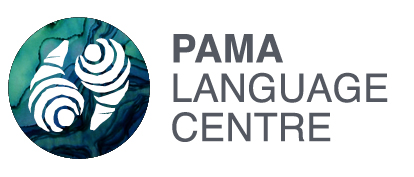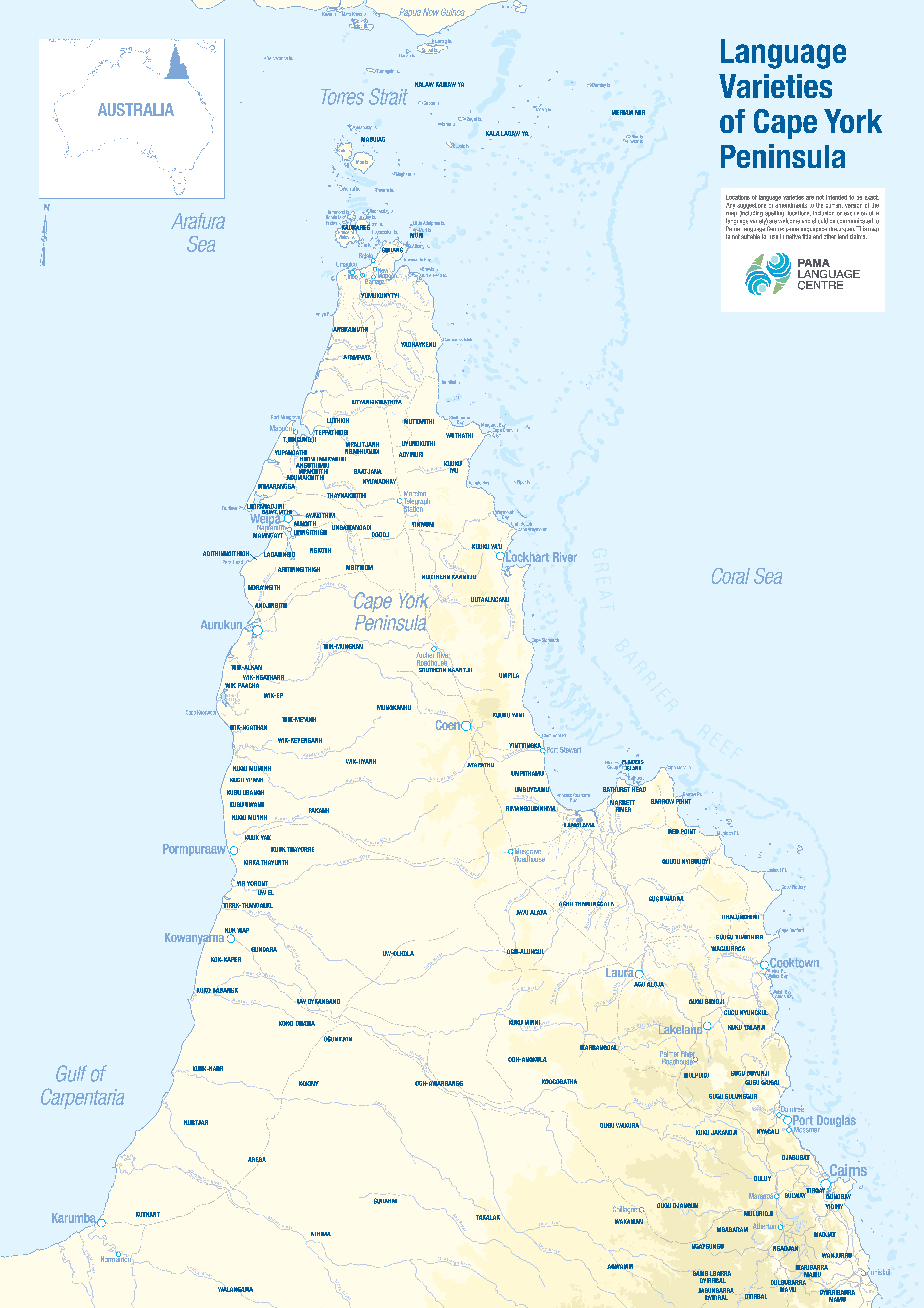There are around 149 language varieties in Cape York Peninsula, belonging to 55 language variety groups. The ‘filter’ bar above the interactive map will allow you to select each group of language varieties, so you can see which languages belong to each group. As you will notice, some language variety groups are named, but most of them are identified simply by a number. Clicking on the name of any language variety on the map will lead to an information page for that language variety.
The language varieties of Cape York Peninsula belong to the Paman language group, named after the word for “person” – “pama” – forms of which these languages all share. Paman languages are members of a larger family called Pama-Nyungan. The Pama-Nyungan language family covers 90 per cent of the continent excluding northern NT and the Kimberley. It is now known that all Australian languages are related.
All Cape York Peninsula languages are shifting and most are imminently endangered. Pama Language Centre currently undertakes recording, revitalisation, maintenance or revival activities with Language Champions and speech communities of the following language varieties: Guugu Yimidhirr, Mpakwithi, Wik-Mungkan, Wik-Ngathan, Wik Ngatharr/ Wik-Alken, Southern Kaantju, Olkola, Uw Olgol, Uw Oykangand, Kuuk Thayorre, Umpila, for the Injinoo Ikya group of language varieties (Atampaya, Yadhaykenu, Angkamuthi, Gudang) and for the Kuku Nganhcarra group of language varieties (Kugu Muminh, Kugu Yi’anh, Kugu Ubangh, Kugu Uwanh, Kugu Mu’inh, Wik-Iiyanh). These languages are coloured pink on the interactive map to the left.
Pama Language Centre’s aim is for all languages shown on the interactive map to eventually link to information for each language variety. All pages are dynamic works in progress. Some pages already contain some great learning materials. We look forward to continuing to work with the Language Champions of Cape York Peninsula to develop this map into a rich and useful resource.


